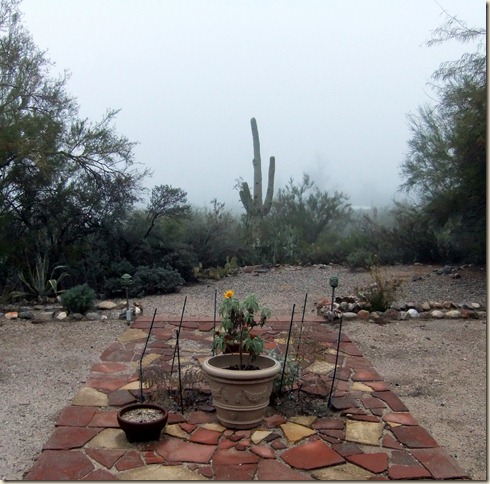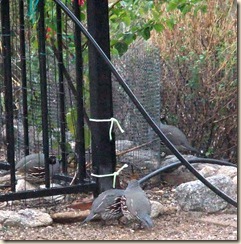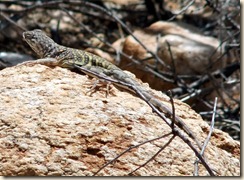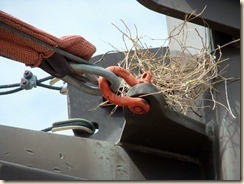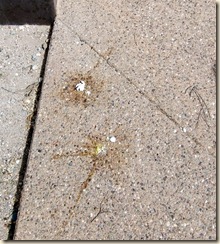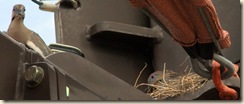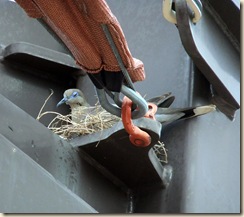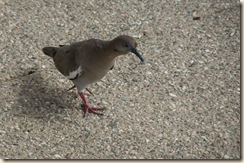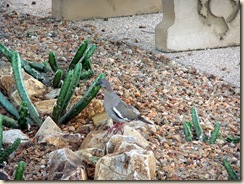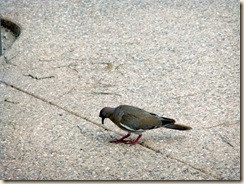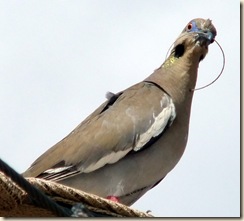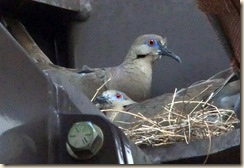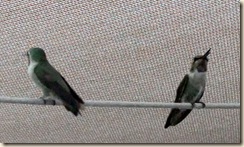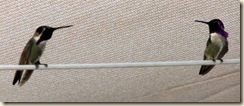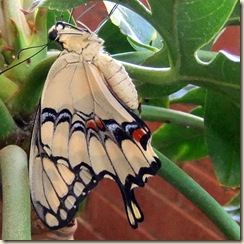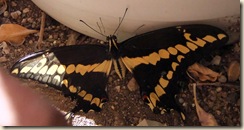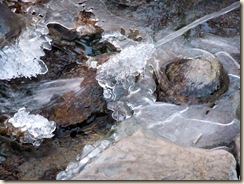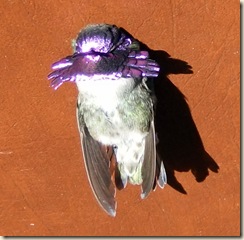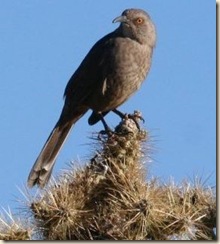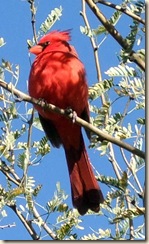I love, love, love cactus wrens, which are not only the State Bird of Arizona, they are the largest wrens in North America.
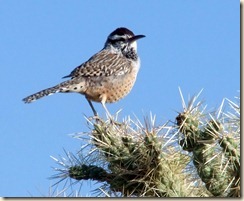
Many visitors to the Park are astounded at how big they are (around 8-9 inches). “That’s a
wren?” Cactus wrens are bold and sassy, seemingly not much afraid of humans. Their voices are loud and raucous, with many calls, ranging from a guttural croak that sounds like a car trying to start its engine to a nasal twang, as if the bird is tuning a loosely-strung banjo.
At
Tohono Chul Park, cactus wrens can be found pretty much everywhere, from the desert trails to the many gardens to the riparian area. Often, they are squabbling or actively looking for something to eat. The references say that they primarily eat insects and other invertebrates, with a soupcon of fruit and seeds. I’ve never seen a cactus wren eat seeds, but here’s a picture of one eating organ pipe cactus fruit on the Texas Trail in the Park.

I once watched a cactus wren pursue and overpower a medium-sized lizard, then grasp it in its beak and beat it to death. I saw similar behavior the other day on a bird walk, only in this case the hapless victim was a large green caterpillar, which the cactus wren swallowed in one gulp once it had been beaten into submission. I also watched one peck a tarantula to death out on one of the Park’s desert trails. When I got closer to take a photo, the cactus wren grabbed his prize and moved it well away from the path, possibly assuming that I wanted to steal his breakfast.
Cactus wrens are well-known for the large (football-sized; roughly football-shaped), messy, enclosed nests they build in cacti and sometimes trees. I once watched a cactus wren methodically break off the spines near the opening to a nest in a cholla. Presumably this was to prevent its babies from impaling themselves. They like to weave interesting and/or colorful found objects into the nest. I used to leave colored yarn for them in my former home. Here’s a great nest in a cholla at the Park that has been decorated with bits of facial tissue and either cellophane or Scotch tape.
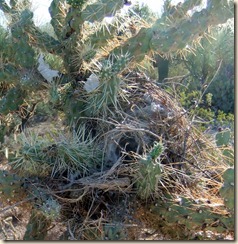
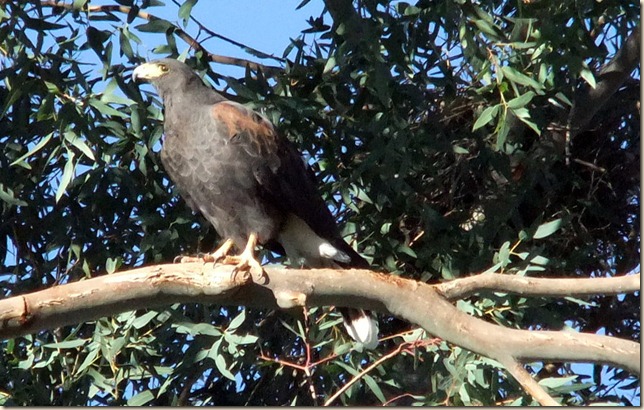 Though fall migration is over and spring migration is several weeks away, we’ve had some terrific birding at the Park during the last two weeks. This beautiful Harris hawk, hanging out in the big eucalyptus at the north end of the Park was a nice surprise. In addition to the Harris hawk, we’ve seen the following “regulars” and winter visitors:
Though fall migration is over and spring migration is several weeks away, we’ve had some terrific birding at the Park during the last two weeks. This beautiful Harris hawk, hanging out in the big eucalyptus at the north end of the Park was a nice surprise. In addition to the Harris hawk, we’ve seen the following “regulars” and winter visitors:
